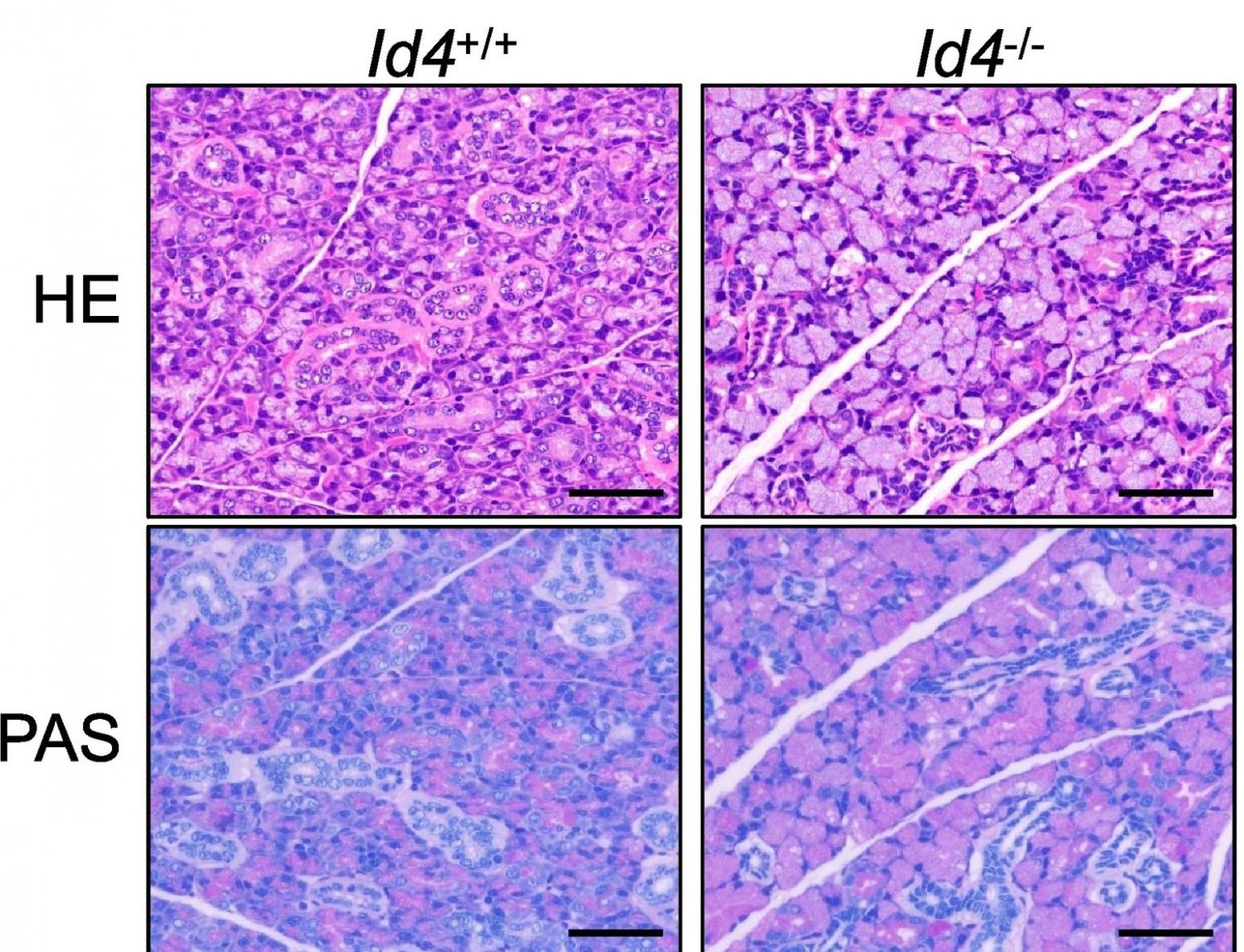
Salivary glands are physiologically orchestrated by the coordinated balance between cell differentiation, proliferation, apoptosis, and interactions between epithelial, mesenchymal endothelial, and neuronal cells, and they are frequent sites of manifestations of Sjögren's syndrome (SS) or IgG4-related disease (IgG4-RD). However, little is known about salivary gland homeostasis and its involvement in those diseases. Inhibitor of DNA binding/differentiation 4 (Id4) is an Id protein involved in the transcriptional control of many biological events, including differentiation. Studies of Id4-deficient mice revealed that Id4-deficient submandibular glands were smaller and exhibited accelerated differentiation, compared with those from wild-type littermates. In addition, dry mouth symptoms and Th17 expansion in splenocytes were also observed in the absence of Id4. Furthermore, Id4 levels in the salivary glands of patients with IgG4-RD, but not SS, were significantly decreased compared with those of healthy controls. miRNA-mRNA integrated analysis demonstrated that miR-486-5p was upregulated in IgG4-RD patients and that it might regulate Id4 in the lesion sites. Together, these results provide evidence for the inhibitory role of Id4 in salivary differentiation, and a critical association between Id4 downregulation and IgG4-RD.
